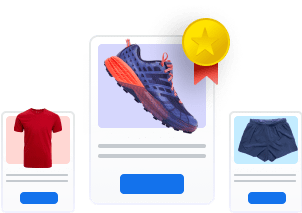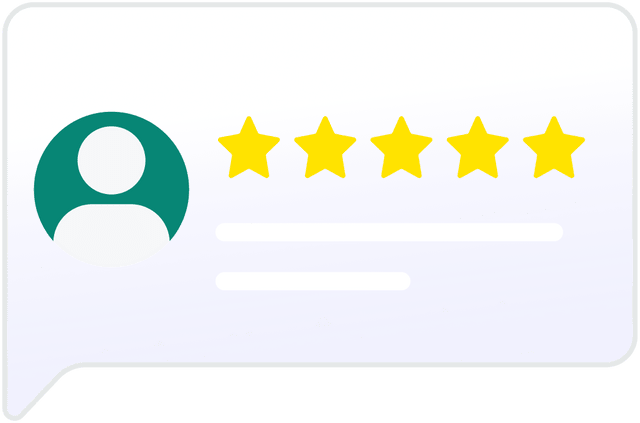New customer, existing customer, partner, or employee – everybody expects a personalized and relevant digital experience today. The companies that are leading the way here are those that have made digital transformation a priority – making it their mission to personify the way they do business across the enterprise.
Personalization can help you increase revenue. It’s an essential component of every growth strategy and your customers must feel it at every step of their journey – from website, to store, to product, to support. Enhancing your website, improving your product offering, and better equipping your customer service team to be more personal with customers sounds like a costly undertaking – and if you are considering it with the resources you have today, it would be.
Fortunately, AI-powered search and recommendations can help growth by bringing more relevance to every digital interaction.
In this post, we explore:
- Growth opportunities when you make your customer – their intent, their interests, their knowledge – the central focus of your organization.
- Personalized customer experiences: the process of providing a salient product or content recommendation to people who interact most with your business is an essential contributor to business growth, higher customer satisfaction, and increased revenue.
- How you can extract invaluable consumer insight from your data to enable your organization to spot expansion opportunities – be it a new product, new market, or an additional revenue stream.
- Finally, we’ll cover how personalizing the sales process has the ability to increase average transaction size and have a significant impact on revenue growth and profitability.
Meeting Customer Expectation with Personalization
Having to search for information is inadequate. We want the most relevant guidance, products, or advice to take the next step. We expect Siri to tell us where the nearest dry cleaner is according to where we are when we ask. We expect Netflix to suggest movies we’ll like so we don’t have to scroll through hundreds of options. We expect retailers to remember our birthday and send us exclusive promotions to celebrate. Simply put: we expect relevance. It’s become the norm and the sooner organizations embrace it, the sooner they can profit from it.
According to a Salesforce AI Report, by 2020 more than 55% of B2C and 75% of B2B buyers will come to expect personalized offers. Before long, companies lagging behind the relevance revolution will simply cease to exist.
5 Personalization Strategies to Increase Revenue Without Increasing Cost
#1. Higher conversions
Personalized content recommendations are an excellent way to boost conversions. Content recommendations are especially powerful in eCommerce. The fact that over 35% of Amazon’s revenue is generated by its recommendation engine is a testament to the influence that personalization can have on customer acquisition and conversions. Customers want to find what they’re looking for quickly and easily. They can be influenced to purchase even more than anticipated if the recommendations are relevant and personalized to their needs and preferences.

Life Extension – a market-leading dietary supplements brand for more than 35 years – was looking to elevate its shopper experience and conversions. “Personalization is a popular topic, but the real challenge is how we deliver it,” says Ben Berriz, System Architect, Life Extension. Since implementing Coveo and personalizing search and customer experience with AI, Life Extension customers have been adding more and more products to their cart – 28 times more to be exact.
Whether you’re measuring conversions as opens, click-throughs, or purchases, personalizing the experience for each customer will increase the likelihood of them taking the desired action and positively impact profitability. Tailoring your digital experience for every customer would be too heavy of a lift without the help of some form of automated marketing like: AI-powered search and recommendations.
Fortunately, with AI and machine learning capabilities, all the nitty-gritty work is left to be automated, freeing your team to work on more complex and creative tasks that will contribute to the growth of your organization.
#2. Additional cross-sell and upsell opportunities
Upselling and cross-selling make up 35% of Amazon’s total revenue. Research says that recommendation engines can help customers face their two biggest challenges while shopping online: wasting time and making difficult choices.
AI-powered site search and web recommendations can boost your sales strategy by quickly identifying upsell/cross-sell opportunities. Remember, your data is your bedrock. These personalized recommendations can make cross-sells available at every stage.
For instance: In an article on MarTech Advisor, I covered the ways in which an AI-powered search and recommendation engine can boost your sales strategy by quickly and easily identifying upsell opportunities. I found that many eCommerce companies which proactively recommended related products using a “Customers Also Considered” prompt or intuitive search query suggestion see a significant increase in their cross-sell and upsell opportunities. In my experience, AI-powered query suggestions begin the upsell early. Using insights identified by your usage analytics, you can upsell to your customers in a way that’s organic and valuable.
Exploring different ways to proactively recommend additional products to your customers goes a long way in increasing profit. Knowing what you should recommend, however, will depend heavily on customer data.
With visibility into your usage analytics, you can spot trends, behaviors, and connections between pages and previous browsing journeys. Those insights coupled with machine learning algorithms help your organization predict what your customers need next.
What they need next – you offer to generate some extra cash flow leveraging cross-selling and upsell opportunities.
#3. Increased customer satisfaction
Whether you’re a big business or a small business – you’re in the business of making people’s lives easier. Without customers, there is no business, so it’s our job to give them what they want and make sure they’re satisfied.
- They want findable information so they can self-serve
- They want an intuitive digital experience regardless of the device they’re using
- They want a dependable product or service and in the event they need to contact support, they want to feel like their time is respected and have the answer to their question quickly.

With 92% of consumers trusting referrals from people they know, keeping your customers happy has never been more crucial. Personalizing your customer experience will not only help to increase satisfaction, but it will also lead to higher customer retention and new business referred by brand advocates. Medallia was on a mission to increase customer satisfaction by offering a more personalized experience. They set out to build a world-class customer community to reduce the required effort to find relevant information – all while increasing sales and profit. With AI-powered search, not only has Medallia seen a 5-point difference in their net promoter score and saved money by empowering their customers to self-serve , they’re using support insight to drive product improvement to further satisfy the current customer.
#4. Use Content Gaps to Personalize Your Offering
Sometimes what your visitors don’t find using your site search is more telling than the things they do. Your customers’ intent is a valuable resource that shouldn’t be squandered in 404 pages and empty search results: you should be actively capitalizing on the information that your usage analytics provide.

These “content gaps” – a term that denotes the disconnect between what your customers are looking to buy and what you do not currently produce or carry – have the potential to be rich revenue opportunities.
How do you go about actually realizing this process, from start to finish? By closing the loop on what your customers expect and what you plan to deliver. Let’s take a deeper dive at how you can turn inefficiencies into profit.
#5. How “No Results” Can Equal Big Results
Content gap analysis is most commonly used for SEO purposes: you investigate your content map, assess what kind of buyers you’re interested in attracting, and produce content for that audience.
Content gap analysis for your site search works a little differently. If you can pinpoint what your customers are looking for but are not finding, you can have a better idea of what your customers expect when they come to your website. Separating them into personas is one thing, anticipating their needs is a whole other ball game, but entirely possible.
Let’s say you run an eCommerce website for various tech products and accessories, and a significant number of customers or prospects are looking for a particular brand of laptop that you don’t yet carry. Using that data to understand your customer’s intent is a great way to illuminate new opportunities. Paying closer attention to search behavior often presents low-hanging fruit that can be picked to attain your revenue goal.
Or perhaps you notice that you have an increasing number of visitors and engagement from prospects in Europe. However, until now, Europe has not been an area you service and you don’t have anything for them. Being able to track who’s coming to your site, what they’re engaging with, what they’re searching for, and where they’re getting stuck (i.e.: language page, areas of delivery, etc.), can help your organization gain market share in a whole new market, or at the very least provide you with a starting point for market research.
Why Should You Care About Personalization?
Digital transformation has been among the top priorities for C-level executives across verticals but the ones leading the way and reshaping the consumer landscape are those who’ve shifted focus to the relevance transformation, and whose missions are to deliver unrivaled personalize experiences. According to Frost & Sullivan, by 2020, personalized customer experiences will overtake price and product as the key brand differentiator.
But what does personalization look like? A recent McKinsey report emphasizes customers’ demands that simply cannot be ignored by organizations hoping to survive in the digital age. Among them are:
- The expectation of recommendations they wouldn’t have thought of on their own
- The desire to be reminded of things they may not be keeping track of
- Omnichannel experiences
- Value in a way that’s personalized and meaningful to them
Fortunately, meeting and even surpassing their expectations has never been more doable than it is today. Your data is the voice of your customer base – AI and machine learning is your way of effectively communicating to them, on an individual level, at scale. AI can fundamentally change the way your organization engages with your customers, partners, and employees and present incredible opportunities for growth without increasing costs of operation. The longer you wait, the more money is being left on the table and the better your competitors’ chances are at delivering the experience your customers expect of your brand.


